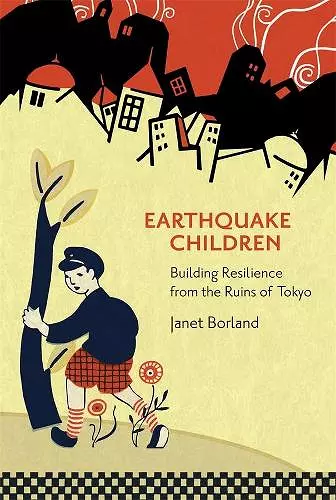Earthquake Children
Building Resilience from the Ruins of Tokyo
Format:Hardback
Publisher:Harvard University, Asia Center
Published:28th Aug '20
Should be back in stock very soon

Japan, as recent history has powerfully illustrated, is one of the world’s most earthquake-prone countries. Today it is also one of the best prepared to face such seismic risk. This was not always the case.
Earthquake Children is the first book to examine the origins of modern Japan’s infrastructure of resilience. Drawing from a rich collection of previously unexplored sources, Janet Borland vividly illustrates that Japan’s contemporary culture of disaster preparedness and its people’s ability to respond calmly in a time of emergency are the result of learned and practiced behaviors. She traces their roots to the 1923 Great Kantō Earthquake, which killed over 100,000 people when it struck the Tokyo region.
Beyond providing new perspectives on Japan’s seismic past, the history of childhood, and everyday life in interwar Japan, Borland challenges the popular idea that Japanese people owe their resilience to some innate sense of calm under pressure. Tokyo’s traumatic experiences in 1923 convinced government officials, seismologists, teachers, physicians, and architects that Japan must better prepare for future disasters. Earthquake Children documents how children, schools, and education became the primary tools through which experts sought to build a disaster-prepared society and nation that would withstand nature’s furies.
An absorbing book…Narrates the vivid and emotional stories of how children experienced and made sense of the earthquake, how teachers and other adults interpreted the children’s experience, and the subsequent initiatives to develop disaster-preparedness in the public…Succeeds in illuminating the contemporary relevance of this historical study. -- Kaori H. Okano * Journal of Japanese Studies *
This fascinating and well-researched volume makes a clear case for the important roles played by children and those thinking about children in the aftermath of the Great Kantō Earthquake…This book will be a worthwhile addition to libraries and useful for scholars of disasters and childhood. -- Alex Bates * Pacific Affairs *
Earthquake Children is essential reading for historians of childhood and of disaster, but it has much to inform other histories as well. Women and men (and other adults somewhere in between) are not the only movers and shakers of scientific advances, technological innovations, and social change; generation and childhood contribute as well, and we should consider them much more often. -- Sabine Frühstück * Contemporary Japan *
[Borland’s] research is thorough, her writing is often vivid, and the book is very well illustrated. Whether using her own words or those of Japan’s children, the author is able to convey a vivid sense of the horror of an event like the Great Kanto Earthquake and the difficulties faced by many survivors…Earthquake Children will appeal to anyone interested in social responses to earthquakes and other disasters in urban areas, to those interested in the history of children, and to anyone interested in the modern history of Tokyo. -- Gregory Smits * Monumenta Nipponica *
Borland’s work is as intellectually rigorous as it is inspiring…This groundbreaking book explains how Japan came to be positioned at the forefront of disaster preparedness globally and highlights the role that children, schools, and education played in that dramatic transformation…I absolutely loved this book and have continued to think about it long after I finished reading the last page. It stands as an unforgettable reminder of how important it is to listen to what children have to say and to invest in their futures. -- Lori Peek * International Journal of Mass Emergencies and Disasters *
ISBN: 9780674247826
Dimensions: unknown
Weight: unknown
352 pages